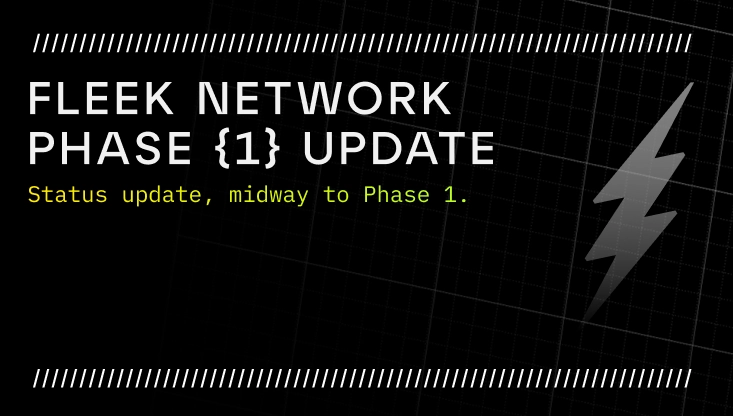Testnet Phase {1}: Quick Update

The core team is working hard on the protocol requirements for this phase, aiming at Thursday 19th of October for the start date.
Several Phase 1 details are still up for consideration, but wanted to at least provide a few quick updates (below) on some of the current thinking.
TLDR:
- Any node operator will have the ability to join Phase {1}
- Node requirements will most likely remain the same, with one addition
- The node onboarding experience will be much better
1) Any node operator will have the ability to join Phase {1}.
While whitelisting nodes might allow us to showcase better performance numbers in Phase {1}, the benefits of not whitelisting and stress testing the system with as many nodes as possible is more beneficial to protocol development/optimization at this stage. Plus this provides a better opportunity to really test the performance-based reputation system and see how it scores different nodes.
In a mainnet environment, there would be a warm up period for all new nodes where their performance would be tested prior to being allocated any real work, so less performant nodes joining the network is only a temporary issue. That part of the system will be introduced in a later testnet phase. So for now might as well take advantage of not having that in place, and seeing how the reputation system and overall performance is impacted in less optimal conditions. If the reputation system performs well, hopefully there won’t won’t be too big of an impact.
In order to get the most out of this exercise, the Foundation plans to benchmark performance of the public Phase {1} testnet against an internal test set of nodes (maybe 50) run for a few days in a controlled scenario so that it is possible to compare performance between the two environments and define where to optimize.
2) Node requirements will most likely remain the same, with one addition.
The final details will be released before Phase {1} begins, but as of now, expect node requirements to remain as described in the documentation and used in Phase {0}. However, one additional node recommendation will be added which is a minimum GB/s download and upload speed.
3) The node onboarding experience will be much better.
As mentioned in the previous Phase {1} blog, there will be a testnet faucet onboarding flow for nodes, which will eliminate the whole whitelisting process and onboarding delays experienced by node operators in Phase {0}. And the team is still actively improving the whole process to ensure that node operators have a seamless experience onboarding to the network for Phase {1}.
FAQ’s
Q. Do I still need to fill out the node application? What if I already did?:
As of now, it is not mandatory or necessary to fill out the node application to join Phase {1}. If you already did fill it out, don’t worry, it might still be used in future testnet phases.
Q. What wallets will the testnet faucet support? What network will the faucet be on?:
The faucet will live on Fleek Network, but still TBD if you will need a wallet or not. The whole thing might just be facilitated via CLI and directly airdropping to nodes. If you do end up needing a wallet, most likely any Ethereum/EVM compatible wallet would work. The full and final details will be shared before Phase {1} begins.
Q. Can I run multiple nodes in Phase {1}?
It is expected that the faucet will have some form of rate limiting, yet to be defined, to ensure fair access and avoid abuse. But yes it will most likely be possible to run multiple nodes. We anticipate some node operators will run nodes in multiple different geographies to help the network achieve better global coverage and geographic distribution.
Thanks to all operators and participants for the patience and feedback given! Expect further updates soon - while the core team focuses on reaching this next milestone.
If you have ideas, or feedback regarding our plans for Phase {1} - share them with the team! Find us on the Fleek’s Discord.
Fleek Foundation ⚡